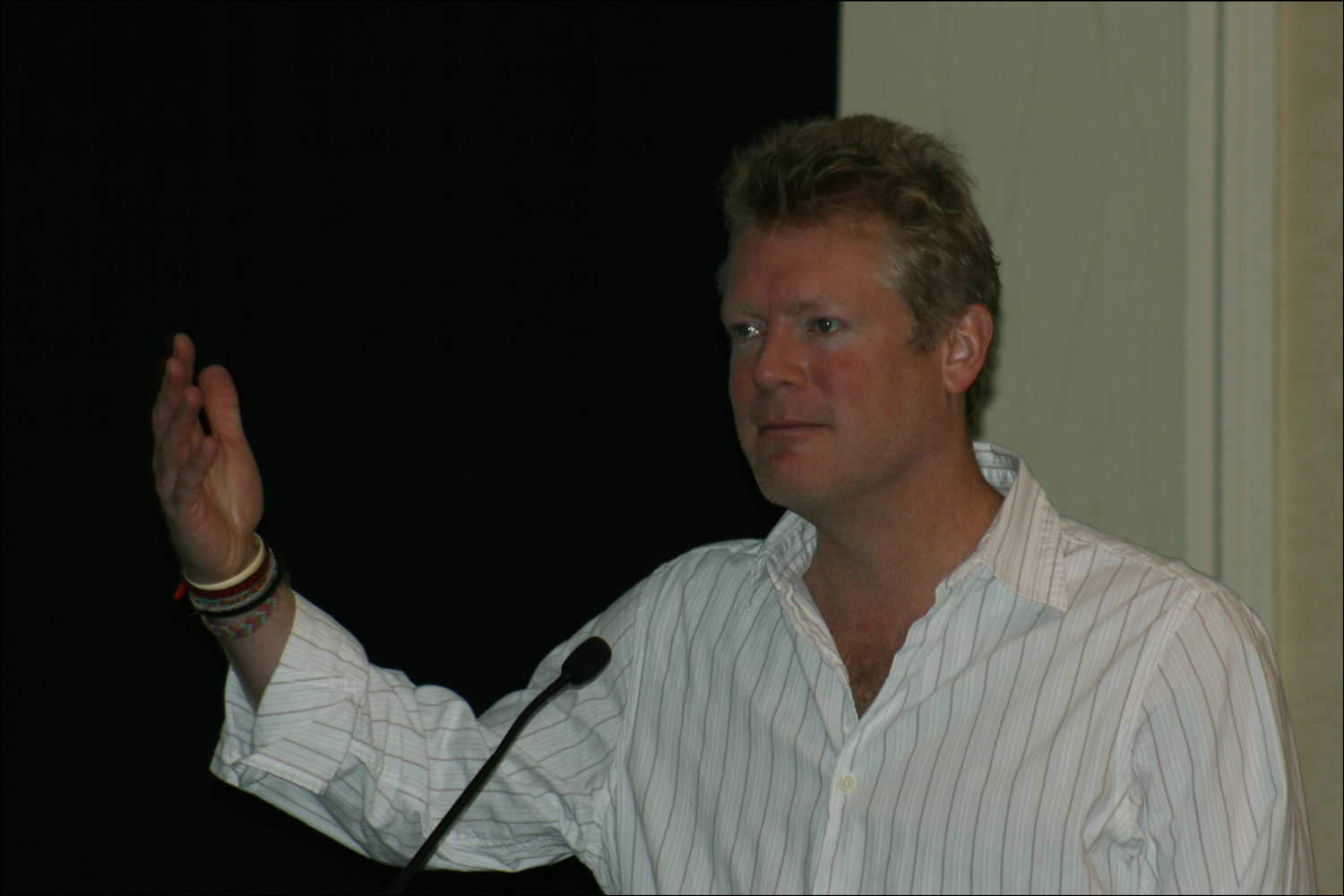After introductory remarks by Bennett Greenspan and Max Blankfeld who announced, among other things, a new collaboration between Family Tree DNA and Archives.com, Spencer Wells, PhD took the podium to present “Genographic Project Update: New from the Field.”
Spencer Wells
SOURCE: Spencer Wells (Houston, Harris County, Texas); photographed by Stephen J. Danko on 05 November 2011.
The 7 billionth person was born on the earth this year. The National Genographic Project is working with traditional indigenous peoples in a three-part program involving field research, public participation, and a Legacy Fund.
In the field, DNA from approximately 75,000 people from over 1,000 populations has been sampled. Except for the Americas, sampling is going well. North America is the worst. In the public participation part of the project, DNA from about 415,000 people from over 130 countries has been sampled. The Legacy Fund, financed by the sale of public participation kits, has distributed over $1.5 million in 52 grants to countries all over the world. The Legacy Fund supports efforts to raise global awareness about the cultural loss faced by indigenous and traditional communities.
The Genographic Project has generated information about the movement of peoples all over the world. It has discovered that Hungarians have 2-3% Asian (Siberian) DNA. People moved or were isolated by a number of different climactic changes. Such changes allowed people to move from Asia to the Americas by the Bering Land Bridge. Other changes isolated people in refugia in Europe during the Ice Age and isolated people in South Africa because of desertification to the north.
Ancient DNA from central Germany shows that farmers from the Fertile Crescent moved in and replaced hunter-gatherers in Europe. When comparing genetic evolution and language evolution in the same populations, there exists a strong correlation between genealogical dates and language dates. Finally, the Genographic Project is beginning to look at recombination as a new type of genetic marker.
Copyright © 2011 by Stephen J. Danko




